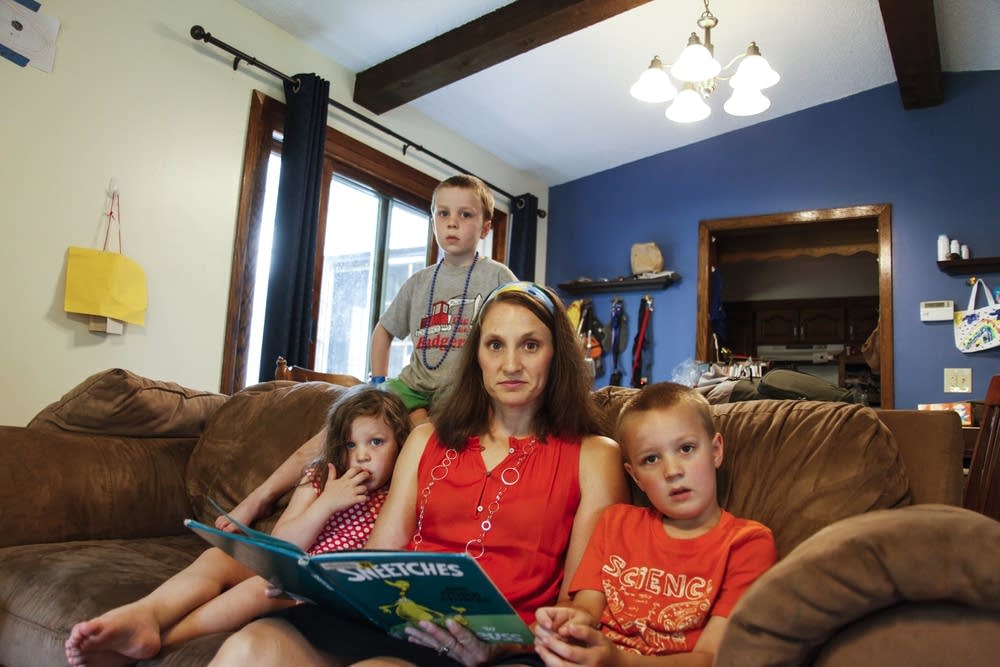Survivors recall terror of I-35W bridge collapse; Collapse was 10 years ago Tuesday
Published 8:43 am Wednesday, August 2, 2017

- A decade after the I-35W bridge collapse, survivor Kelly Kahle is a stay-at-home mom living with her four children in Columbia Heights. Maria Alejandra Cardona | MPR News
By Solvejg Wastvedt
MPR News/90.1 FM
Kelly Kahle was driving north on the Interstate 35W bridge to a soccer game on Aug. 1, 2007. It was another busy day on one of Minnesota’s busiest highways near the end of rush hour.
Then she heard the bridge rumble.
Suddenly, it seemed to her that the north end of the bridge was rising into the air. Instead, Kahle’s section of the bridge was plunging toward the Mississippi River.
“And then all of a sudden muddy water with bits of concrete hit the window and I’m like, ‘God please don’t let me die by drowning. I don’t want to die that way,’” Kahle said. “And then all of sudden it cleared, and the car is still and we’re just like, ‘Get out, get out. We have to get out.’”
That unthinkable moment happened 10 years ago, today. Thirteen people died in the collapse of the I-35W bridge and 145 were injured. For those who survived the collapse or came to rescue, the memories remain vivid, and painful.
Some survivors suffered back injuries, brain injuries and other trauma. Several declined to be interviewed after a decade, saying they still prefer not to talk about it.
Kahle, miraculously, was unhurt. Her section of the bridge was floating right-side-up in the water. Other cars perched on angled pieces of roadway on either bank. Twisted steel covered the ground.
In archived interviews from 2007, survivors Jamie Winegar and Melissa Hughes spoke of feeling helpless as the bridge came down around them.
Winegar remembered “just feeling this boom, boom, and my husband was saying, ‘are you alright?’ Because it fell four times.”
Said Hughes: “I swear I saw a construction worker suspended in the air and just that feeling, that free-fall feeling. It felt like we did that twice.”
Driving up to the scene on a side road immediately after the collapse, Sean McLoughlin said he was struck by the silence.
“There were no sirens,” he recalled. “I didn’t see it go down, but I got there right after, and I kept thinking, ‘Doesn’t anybody know about this? ‘Isn’t anybody going to come and help us?’”
McLoughlin was one of many who helped survivors out of stranded cars. Within minutes, emergency crews poured in from Minneapolis and nearby cities. Responders brought boats and diving equipment.
Chris Messerly is a lawyer who represented survivors and victims’ families in multiple lawsuits after the collapse. You didn’t have to be on the bridge that day to be shaken, he said.
“A bridge should be safe. A bridge in America shouldn’t just fall down,” Messerly said. “To have a national and even a worldwide impact on how people feel about the safety of our infrastructure is a significant thing.”
Following the collapse, the Minnesota Department of Transportation increased staff for bridge inspections and maintenance. More than 100 bridges lacking key design redundancies were retrofitted or replaced.
The Federal Highway Administration also revised its monitoring of state bridge inspections across the country.
Still, 10 years later Kahle still gets anxious driving on bridges.
“If you’re stopped in rush hour and the conditions line up, I’m definitely like, I need to be in the left lane, I need to be closest to the middle because that’s the part that won’t flip over into the water,” she said. “I still have those kind of, ‘if-this-fails’ scenarios. What’s my exit strategy?”




